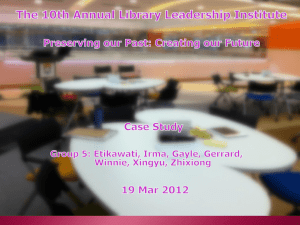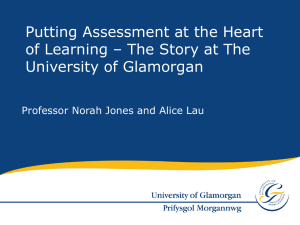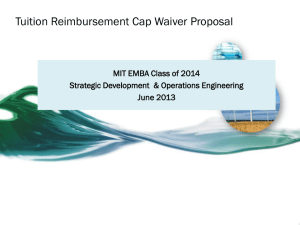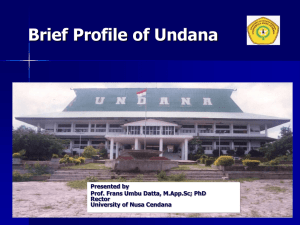UniTec and MIT – Session 7 - Building and Construction Productivity
advertisement
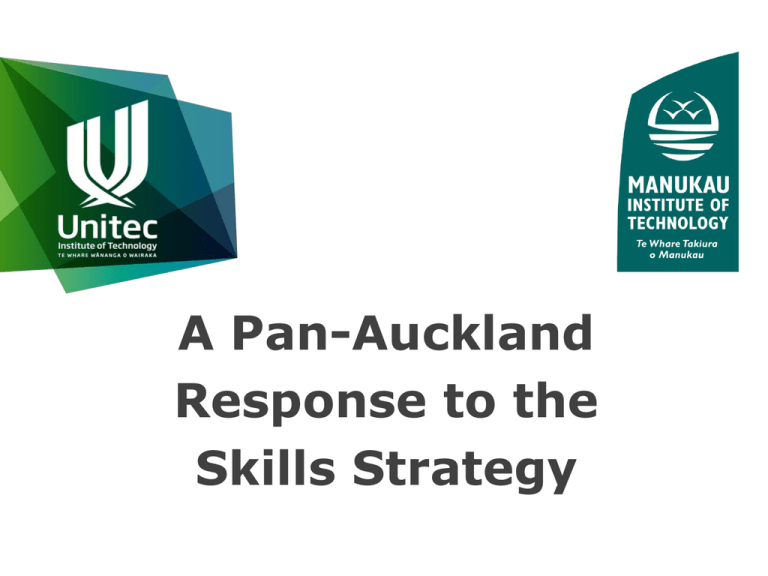
A Pan-Auckland Response to the Skills Strategy Unitec & MIT Engineering & Trades Faculties Students: 11,200 (4,350 EFTS) Staff: 290 Degrees: BE(Hons), BEngTech, BConstruction, B.Applied.Tech Disciplines: Civil, Electrical & Mechanical Engineering, Construction Management, Construction Economics, Applied Technology, Property Development, Architectural Technology, Carpentry, Building, Light Automotive, Marine Technology, Boat Building, Plumbing, Gas Fitting, Roofing, Drainlaying, Electronics, Electrical Trades. Unitec & MIT Engineering & Trades Faculties Combined Coverage of Auckland Region Plus Mahurangi and Pukekohe (off map) Unitec & MIT Engineering & Trades Faculties Why Collaborate? Act as one entity to better support industry needs and Government priorities in the Auckland area Become highly efficient, flexible & responsive to industry Move operations from “academic time” to “business time” Align and broaden combined offerings to better meet employer needs and Government intentions Actively support “Line-of-Sight to Employment” for Auckland secondary school students Expand capability for applied research and technology transfer Respond jointly to the Built Environment Skills Strategy Unitec & MIT Engineering & Trades Faculties Key Driving Documents Unitec & MIT Engineering & Trades Faculties Tertiary Education Strategy 2010-2015 1. Relevant & efficient tertiary education provision 2. Tertiary providers working closely with industry 3. Applied research and technology transfer Unitec & MIT Engineering & Trades Faculties Building Environment Skills Strategy 1. Theme: “Fragmentation to Collaboration” 2. Industry engagement with education & training 3. “20% productivity increase by 2020” Unitec & MIT Engineering & Trades Faculties Building Skilled & Safe Workplaces 1. More productive & innovative workforce 2. Range of skills to be globally competitive 3. Workplace safety is the embedded culture Unitec & MIT Engineering & Trades Faculties Delivering Better Public Services 1. Boosting skills and employment 2. Increase % of 18 year olds at NCEA L2 or higher 3. Increase % of 25-34 year olds at L4 and above Unitec & MIT Engineering & Trades Faculties “Line of Sight” to Employment Secondary Schools Education & Training Sector Vocational Pathways Career Planning from Yrs 7 & 8 Bridging Courses Trade Academies Industry Sectors Industry Leadership Aligned Portfolio Responding to New Careers Research & Technology Transfer Unitec & MIT Engineering & Trades Faculties “Line of Sight” to Employment Secondary Schools Education & Training Sector Vocational Pathways Industry Sectors Industry Leadership Strengthen Connections between Education & Training Sector and Industry Sectors Unitec & MIT Engineering & Trades Faculties Problem: Complex many-to-many interface with unclear signals School Leavers Existing Workforce Education & Training Sector Industry Skill Needs Regional & National Plans ? Government Intentions “Graduates” not necessarily well aligned to industry needs ? Improved NZ Economic Productivity Unitec & MIT Engineering & Trades Faculties Output: Industry sector Skill Needs at each Level for next 5 years School Leavers (updated annually) Existing Workforce Industry Skill Needs Industry Leadership Councils Education & Training Sector Skilled Workforce matched by sector & region Regional & National Plans Government Intentions Improved NZ Economic Productivity Unitec & MIT Engineering & Trades Faculties “Industry Leadership Councils” Missing piece of the puzzle Require support of all stakeholders to clarify industry sector needs National reach, with one for each major industry sector Broadly similar to Skills Councils as they exist in UK, Canada, Hong Kong, Australia but specifically adapted for NZ needs Purpose: To translate “Government intentions & industry needs” into “education and training deliverables” Output: National workforce skill needs mapped ahead five years to guide programme design and delivery Unitec & MIT Engineering & Trades Faculties “20% Productivity Increase by 2020” 2013 2014 2015 2016 2017 2018 2019 2020 Level 9 Level 8 Level 7 Level 6 Level 5 Level 4 Level 3 Levels 1 & 2 Suggestion: A framework for each skill set specified by region (updated annually) Unitec & MIT Engineering & Trades Faculties “20% Productivity Increase by 2020” 2013 2014 2015 2016 2017 2018 2019 2020 Level 9 Level 8 Level 7 Level 6 Level 5 Level 4 Level 3 Levels 1 & 2 Suggestion: A framework for each skill set specified by region (updated annually) Unitec & MIT Engineering & Trades Faculties “20% Productivity Increase by 2020” 2013 2014 2015 2016 2017 2018 2019 2020 Level 9 Level 8 Level 7 Level 6 Level 5 Level 4 Level 3 Levels 1 & 2 Suggestion: A framework for each skill set specified by region (updated annually) Unitec & MIT Engineering & Trades Faculties “20% Productivity Increase by 2020” 2013 2014 2015 2016 2017 2018 2019 2020 Level 9 Level 8 Level 7 Level 6 Level 5 Level 4 Level 3 Levels 1 & 2 Suggestion: A framework for each skill set specified by region (updated annually) Unitec & MIT Engineering & Trades Faculties Concept Adaptable to Regional Needs Industry Leadership Councils “Translator” Unitec & MIT Engineering & Trades Faculties Summary Unitec & MIT engineering and trades faculties collaborating for educational, training and social benefit of wider Auckland area Collaboration will bring us opportunities for greater efficiency Problem of engaging with industry outlined and clarified Unitec-MIT proposing a “Industry Leadership Councils” concept to create a more practical and formal interface between industry sectors, Government and tertiary education & training Unitec & MIT keen to pilot this concept in Auckland area for Construction & Infrastructure sector Expected to have significant impact on productivity objectives Happy to share this work with everyone interested. Unitec & MIT Engineering & Trades Faculties Suggested next steps … Invitation to an independently facilitated national forum Including industry and business leadership representation Extended to all invitees to this Construction Skills Summit Forum Purpose: To flesh out how Industry Leadership Councils should be structured and function in practice Forum Output: Charter to guide Industry Leadership Councils Focus initially on Construction & Infrastructure sector Aiming to hold this forum early in new year Unitec & MIT Engineering & Trades Faculties Discussion Questions 1. Are there any other missing pieces of this jigsaw puzzle? 2. How do we assist more effective collaboration between industry and tertiary education? 3. What advice or guidance can the Summit give to Unitec and MIT in our collaboration? Unitec & MIT Engineering & Trades Faculties Unitec & MIT Engineering & Trades Faculties

